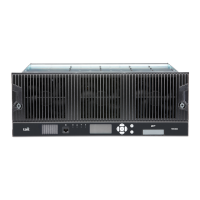110 Maintenance TB9300 Installation and Operation Manual
© Tait International Limited April 2024
6 Maintenance
The base station is designed to be very reliable and should require little
maintenance. However, performing regular checks will prolong the life of
the equipment and prevent problems from happening.
It is beyond the scope of this manual to list every check that you should
perform on your base station. The type and frequency of maintenance
checks will depend on the location and type of your system. The checks and
procedures listed below can be used as a starting point for your
maintenance schedule.
Performance
Checks
We suggest you monitor the following operational parameters using the
WebUI:
■ VSWR and/or reflected power
■ DC input voltage, especially on transmit
■ Any temperature alarms
■ Forward power
Simulcast ■ External reference absent
■ NTP unsynchronized
■ 1PPS
■ Simulcast Unsynchronized
These basic checks will provide an overview of how well your base station
is operating.
Reciter We recommend that you calibrate the reciter after three months of
operation, and then annually for H band reciters, or every three years for
B band reciters. The calibration procedure is described in the Help
(Calibrate > Reciter > Internal reference), and requires a calibrated
frequency generator - a GPS-derived frequency reference is recommended.
PA There are no special maintenance requirements for the PA.
PMU There are no special maintenance requirements for the PMU. However, we
suggest that you periodically check that the screws on the DC input
terminals are tightened to the recommended torque of 18–20lbf·in
(2–2.25N·m). They may work loose with thermal cycling. In addition, if
you are using battery back-up, you should check the batteries regularly in
accordance with the manufacturer’s recommendations.

